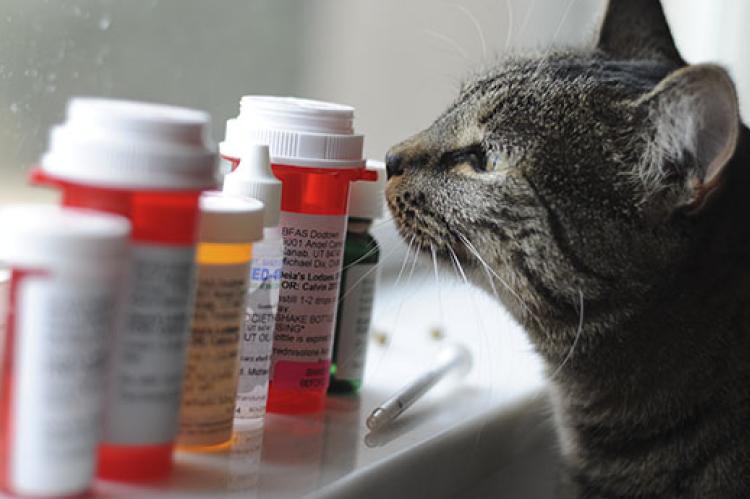How to Give a Cat a Pill

Do you have to give your cat a pill, but they just won't take it? Some cats will consume their medication if it's simply mixed with in their food. However, there are plenty of times when medicating a cat isn't so easy. Fortunately, there are still options to try to get your beloved cat their medicine. Learn different methods for how to give a cat a pill.
Teaching your cat to take pills like treats
Here's how to make giving a pill to your cat easy!
- Get some tiny, empty pill capsules.
- Coat them in a lickable cat treat, such as Churu.
- Give them to your cat as you would a regular treat. (Make sure to call them a "treat" or whatever your special word is for a food reward.)
Then, when your vet prescribes medicine in pill form for your cat, you can just pop it in the capsule and watch your cat enjoy taking their medicine (treat). If your cat is on multiple medications, they might even be able to go in one capsule. Discuss your plan to use the pill capsules with your vet.
Hiding cat pills in treats
Similar to using empty pill capsules, you also can hide your cat's medication in canned food or commercial products, such as Pill Pockets. Or you can cook a special meatball in which to hide the pill.
If you decide to try meatball treats, be choosy about what you put in the meatball. The meatball should be made up of food from your cat's existing diet and, of course, should not contain ingredients your cat is allergic to. Also, make sure to avoid foods that are toxic to cats, such as chocolate, macadamia nuts, grapes, raisins, onions, and garlic, to name a few.
In addition, some foods are not good for certain health conditions in cats. For example, salty foods should not be used to give a cat heart medication. Fatty foods should not be given to an animal with pancreatitis. And really hard foods should not be given to a cat with dental disease. Please check with your veterinarian before using a food as a treat to get your cat to take a pill.
Common foods that work well for hiding medications include peanut butter, cheese, chicken, or meat-flavored baby food. As many cat people know, though, some crafty cats somehow manage to eat the treat and spit out the medication. In that case, you might need to get even craftier and trick your cat into taking the pill. If the medication can be crushed up, try doing that and then hiding it in mushy food (e.g., baby food). However, discuss this with your vet first because some pills shouldn't be crushed.
Pilling a cat using a pill gun
Another option is to try to get the pill down the animal’s throat yourself. This can be done with your fingers if the animal is amenable to that, but many are not. For cats, a pill gun is a handy device you can use to prevent yourself from getting bitten. This device shoots the pill into the back of the animal’s mouth and forces the animal to swallow it.
Cats (understandably) don't like this, and we don't recommend pilling a cat this way for long-term medicating. It can cause some cats to run and hide, and it's best not to use this forceful method on shy and nervous cats. But a pill gun can work well in the short run for some cats who aren't getting their medication down using other methods.
If you're afraid of being bitten when trying this method, get some training from your veterinarian or veterinary technician on proper pill gun technique. There are also many tutorials online that give great demonstrations on how to pill a cat.
Using other feline medication formulas
If you aren't having luck with getting your cat to take a pill, it might be worth trying to get the medication made into a different formula. Many pills also come in, or can be made into, a liquid form, which can be squirted into an animal’s mouth. But be prepared: Your cat might spit it out.
Some medications also can be made into a transdermal form, which means they absorb through the skin. This form can work well for some medications, but they might cost a little more when they need to be specially made. It's important to apply transdermal meds wearing gloves because they can absorb through human skin as well. Always carefully follow the application instructions.
Giving pills with multiple pets
If you have multiple pets in your household, you might be able to use this to your advantage when considering how to give your cat a pill. You can give treats to all the animals and just have the one treat "doctored" with the medication for the appropriate animal. If there is competition for treats, the medicated cat might feel like they need to hurry up and eat their treat before someone else gets it.
Proceed with caution, though, to make sure this strategy doesn't result in fights and to ensure that another animal doesn't accidentally get the medicated treat. It works best if the cat needing the medication tends to be the treat-stealing one and not the one who lets their treats get stolen.